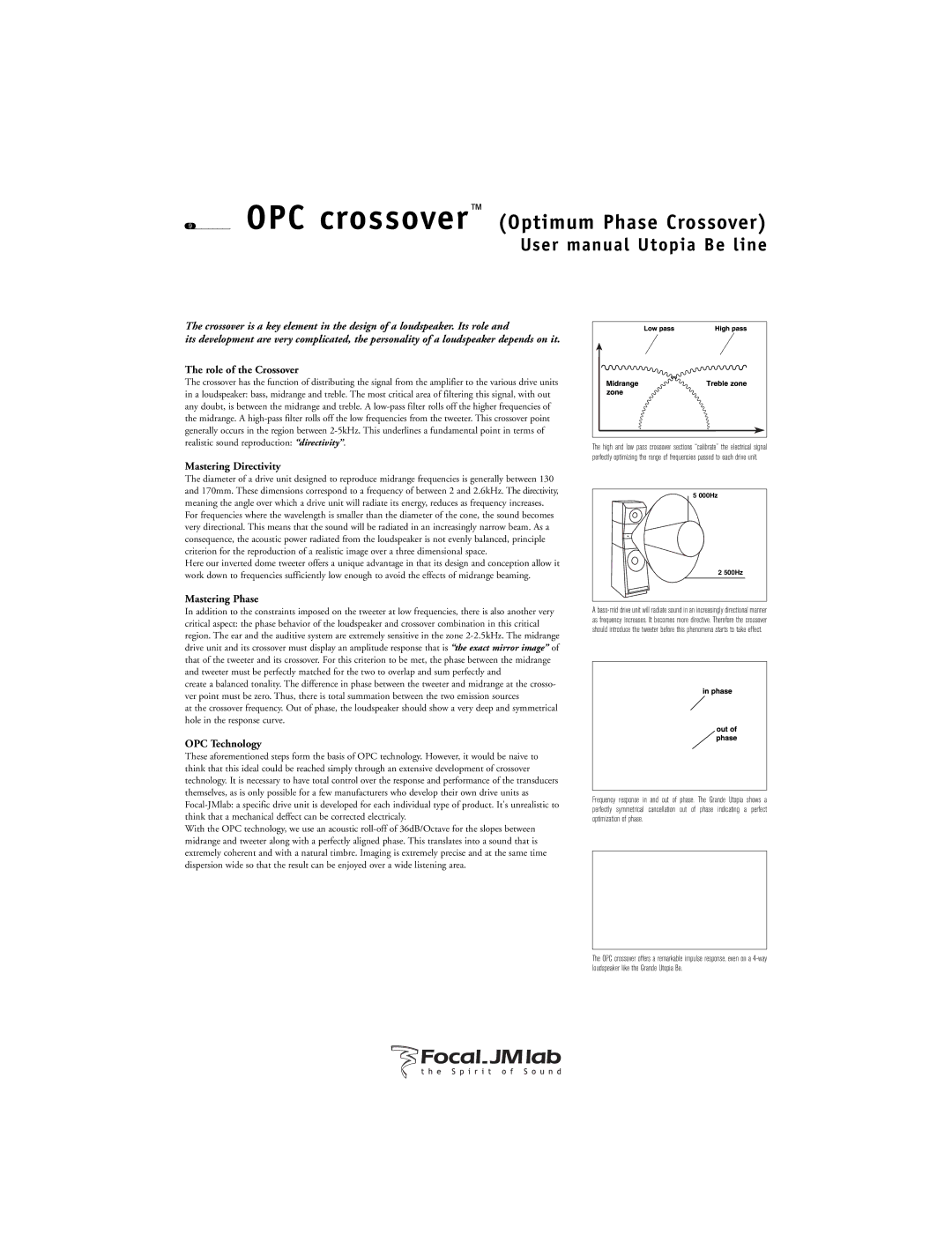Utopia Beryllium Line specifications
The Focal Utopia Beryllium Line represents the pinnacle of headphone technology, combining cutting-edge materials with sophisticated design to deliver an unparalleled listening experience. Renowned for their audio fidelity, these headphones have become a benchmark in the high-end audio market, attracting audiophiles and casual listeners alike.At the heart of the Utopia series is the innovative beryllium driver. This unique material has been chosen for its exceptional rigidity and lightweight properties, which allow for precise sound reproduction across a wide frequency range. The beryllium dome used in the drivers is lighter than traditional materials like plastic or aluminum, contributing to a rapid response and minimal distortion, even at high volumes.
Another hallmark of the Utopia Beryllium Line is its open-back design, which enhances the listening experience by creating a natural and immersive soundstage. This design allows air and sound to flow freely, resulting in a more open and airy sound. Listeners are treated to an expansive audio landscape, with instruments and vocals feeling as if they are placed in a three-dimensional space.
The Utopia headphones also incorporate Focal's "M" shape dome technology, which optimally shapes the driver to provide an extended frequency response. This technology ensures that the headphones deliver rich bass, detailed mids, and sparkling highs. The frequency response ranges from a low of 5 Hz to a high of 50 kHz, allowing listeners to experience the full spectrum of sound.
Comfort is another critical aspect of the Utopia design. The headphones feature soft memory foam earpads and a lightweight structure that ensures long listening sessions can be enjoyed without discomfort. The headband is made from high-quality materials, contributing to both the aesthetic appeal and the longevity of the product.
Further, the Utopia Beryllium Line boasts a striking aesthetic, with a luxurious look that includes genuine leather and an elegant, modern finish. The combination of form and function makes these headphones not just a tool for listening, but a statement piece for any audio enthusiast.
In summary, the Focal Utopia Beryllium Line stands out for its revolutionary use of beryllium in driver technology, open-back design, and commitment to comfort and aesthetics. These features come together to create a transcendent auditory experience, setting a high standard for what audiophiles can expect from premium headphones. Whether for casual listening or critical listening sessions, the Utopia Beryllium Line is engineered to impress.

